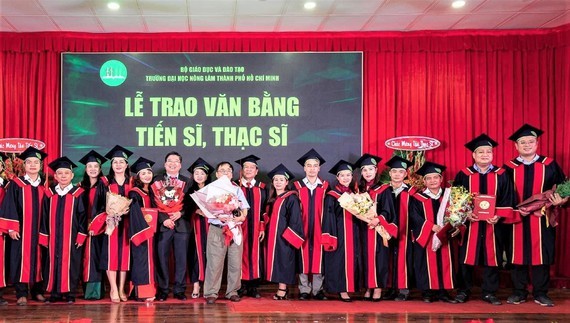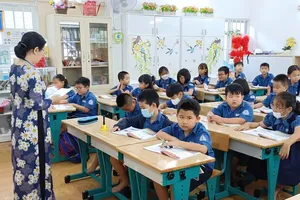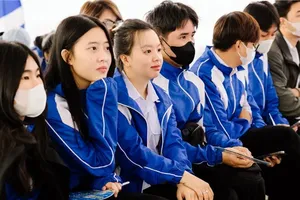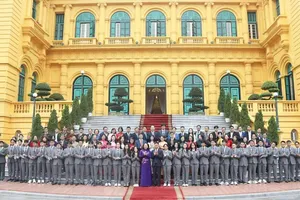 Illustrative photo
Illustrative photo
Changes in the newest circular on enrolment and training for master’s degrees include enrolment on the internet and online training with some requirements.
Simultaneously, the circular 23 adhered to the Law for Higher Education No.34 which allows educational institutions to conduct blended learning, a combination of learning at a distance and the traditional on-campus learning along with requirements to improve training qualities.
Moreover, according to the latest circular, lecturers should provide less than 30 percent of the program volume when conducting online teaching. Additionally, master graduates must achieve the fourth level of the Vietnam National Qualification Framework comprised of six levels.
The new circular also says instructors of university graduates who wish to pursue a master's course must obtain Ph.D degree, especially in art schools. However, in reality, only excellent artists or people’s artists who have not obtained Ph.D degrees yet but have invaluable experience in the field. Therefore, the new circular’s article 8 assigns training institutions to set regulations on criteria for instructors of master students.
According to Assoc. Prof. Dr. Nguyen Thu Thuy, Director of the Higher Education Department under the Ministry of Education and Training, a master's degree program must comply with the standard regulations on research-oriented or application-oriented training programs. The duration of master's degree training is determined on the basis of the number of credits that must be accumulated for each program and prescribed by principals of the training institution. It should be two years.
Regarding the admission method, the training institution will base on the university study results and propose research with a research-oriented master's program. Schools promulgate regulations on organizing admission examinations to suit their schools and training majors, such as reviewing academic records, work experience, essays about themselves, and letters of recommendation from lecturers or managers.
Dr. Nguyen Trung Nhan, Head of Training Department, Ho Chi Minh City University of Industry, said that the new Circular 23 allowing online enrollment and training at master's level is in line with the current trend.
In his opinion, two important new points in this regulation are flexible enrollment methods which allow training institutions can organize entrance exams or admission and allows online training 30 percent of the program volume. This will reduce exam pressure and create conditions for both learners and training institutions in the context of the epidemic. Certainly, training institutions must be responsible for their training quality.
According to a leader of Vietnam National University in Ho Chi Minh City, the Circular 23 has many good points approaching international standards such as allowing credit accumulation, switching training institutions, diversifying forms of enrollment and training...
However, the Ministry of Education and Training should continue to improve some points in the future. Firstly, the Ministry should explain why online training must not exceed 30 percent of the volume of training programs but 10 percent or 80 percent. Moreover, how a school calculates the percentage of training program volume when it conducts both on-campus learning and online learning. More importantly, there should be 100 percent online training with specific regulations on quality assurance conditions.
Second, regulation makers should consider the learner's current job as a criterion. For example, if you graduated from Computer Science but worked as an educational manager for more than 3 years, you can study a master's program in Educational Management. Such additional regulations both encourage lifelong learning and are practical.
Third, in terms of training locations, the Ministry of Education and Training should allow local training of applied master's programs, instead of compulsory training at training institutions. This approach ensures the right to access new knowledge at low cost for many learners, making the most of online training. It is more effective to have the specific geographical scope and quality requirements (such as accreditation) and to closely monitor the training process.
























